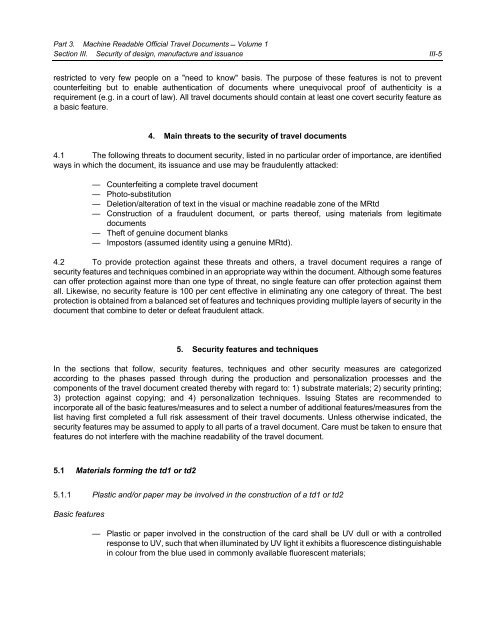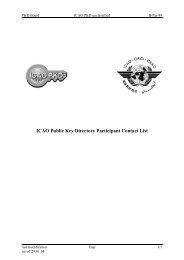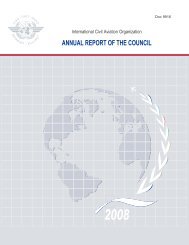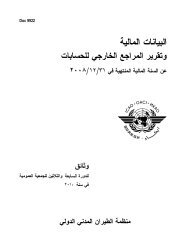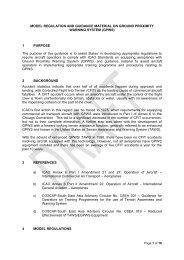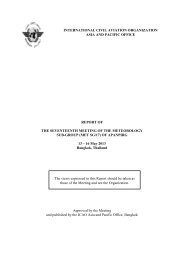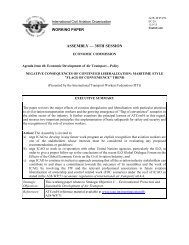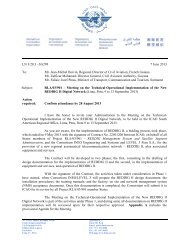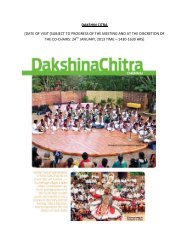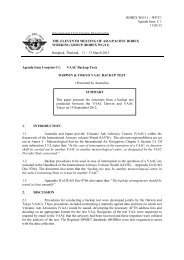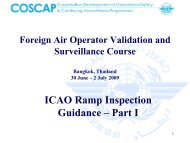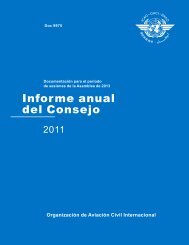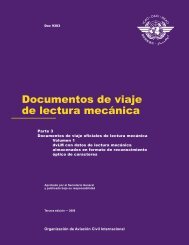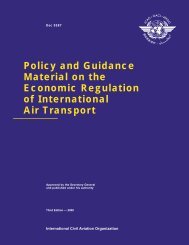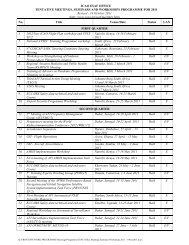Machine Readable Travel Documents - ICAO
Machine Readable Travel Documents - ICAO
Machine Readable Travel Documents - ICAO
Create successful ePaper yourself
Turn your PDF publications into a flip-book with our unique Google optimized e-Paper software.
Part 3. <strong>Machine</strong> <strong>Readable</strong> Official <strong>Travel</strong> <strong>Documents</strong> � Volume 1<br />
Section III. Security of design, manufacture and issuance III-5<br />
restricted to very few people on a "need to know" basis. The purpose of these features is not to prevent<br />
counterfeiting but to enable authentication of documents where unequivocal proof of authenticity is a<br />
requirement (e.g. in a court of law). All travel documents should contain at least one covert security feature as<br />
a basic feature.<br />
4. Main threats to the security of travel documents<br />
4.1 The following threats to document security, listed in no particular order of importance, are identified<br />
ways in which the document, its issuance and use may be fraudulently attacked:<br />
— Counterfeiting a complete travel document<br />
— Photo-substitution<br />
— Deletion/alteration of text in the visual or machine readable zone of the MRtd<br />
— Construction of a fraudulent document, or parts thereof, using materials from legitimate<br />
documents<br />
— Theft of genuine document blanks<br />
— Impostors (assumed identity using a genuine MRtd).<br />
4.2 To provide protection against these threats and others, a travel document requires a range of<br />
security features and techniques combined in an appropriate way within the document. Although some features<br />
can offer protection against more than one type of threat, no single feature can offer protection against them<br />
all. Likewise, no security feature is 100 per cent effective in eliminating any one category of threat. The best<br />
protection is obtained from a balanced set of features and techniques providing multiple layers of security in the<br />
document that combine to deter or defeat fraudulent attack.<br />
5. Security features and techniques<br />
In the sections that follow, security features, techniques and other security measures are categorized<br />
according to the phases passed through during the production and personalization processes and the<br />
components of the travel document created thereby with regard to: 1) substrate materials; 2) security printing;<br />
3) protection against copying; and 4) personalization techniques. Issuing States are recommended to<br />
incorporate all of the basic features/measures and to select a number of additional features/measures from the<br />
list having first completed a full risk assessment of their travel documents. Unless otherwise indicated, the<br />
security features may be assumed to apply to all parts of a travel document. Care must be taken to ensure that<br />
features do not interfere with the machine readability of the travel document.<br />
5.1 Materials forming the td1 or td2<br />
5.1.1 Plastic and/or paper may be involved in the construction of a td1 or td2<br />
Basic features<br />
— Plastic or paper involved in the construction of the card shall be UV dull or with a controlled<br />
response to UV, such that when illuminated by UV light it exhibits a fluorescence distinguishable<br />
in colour from the blue used in commonly available fluorescent materials;


